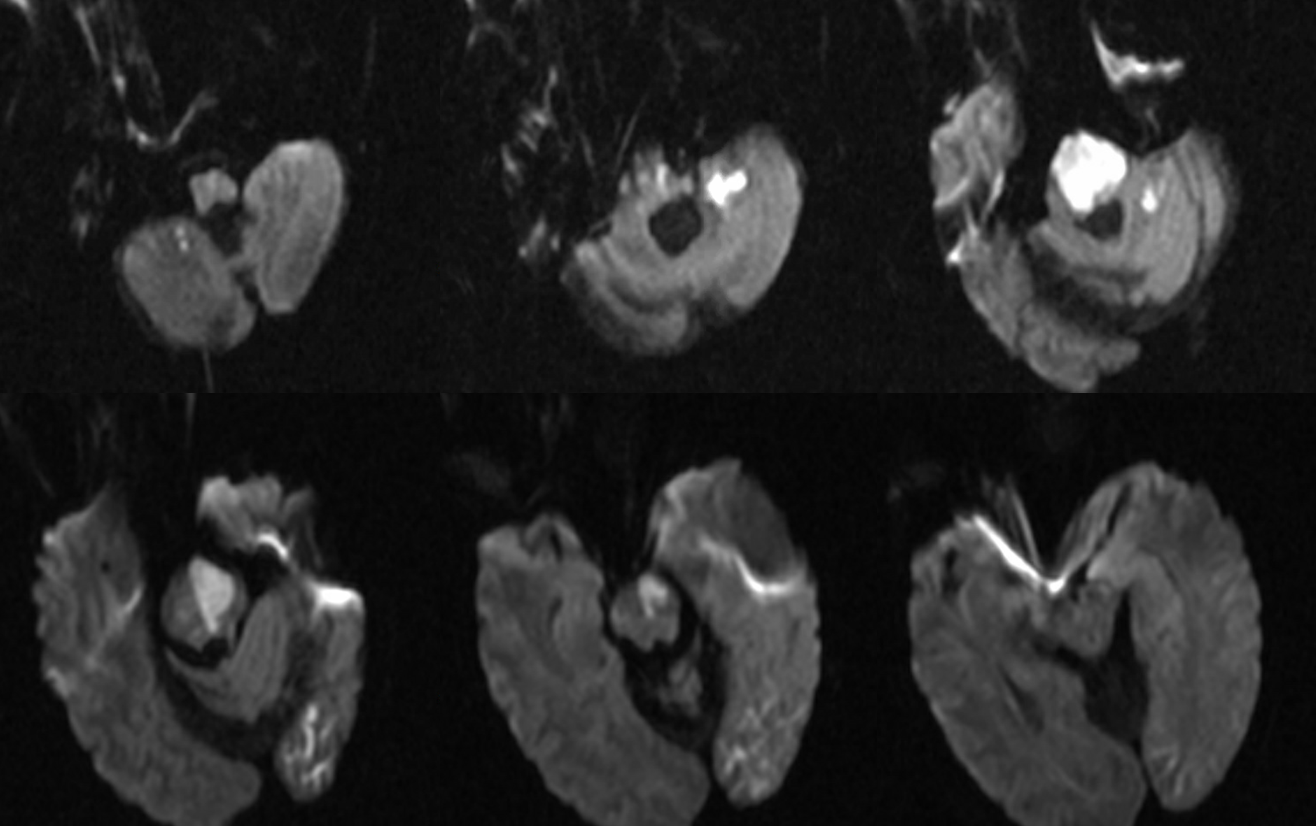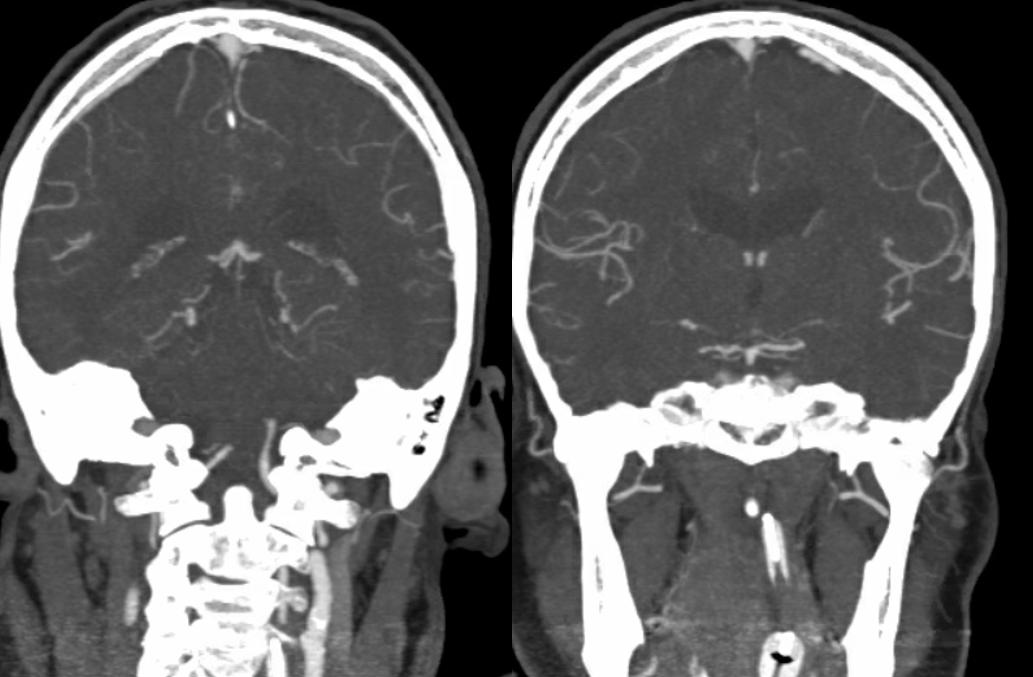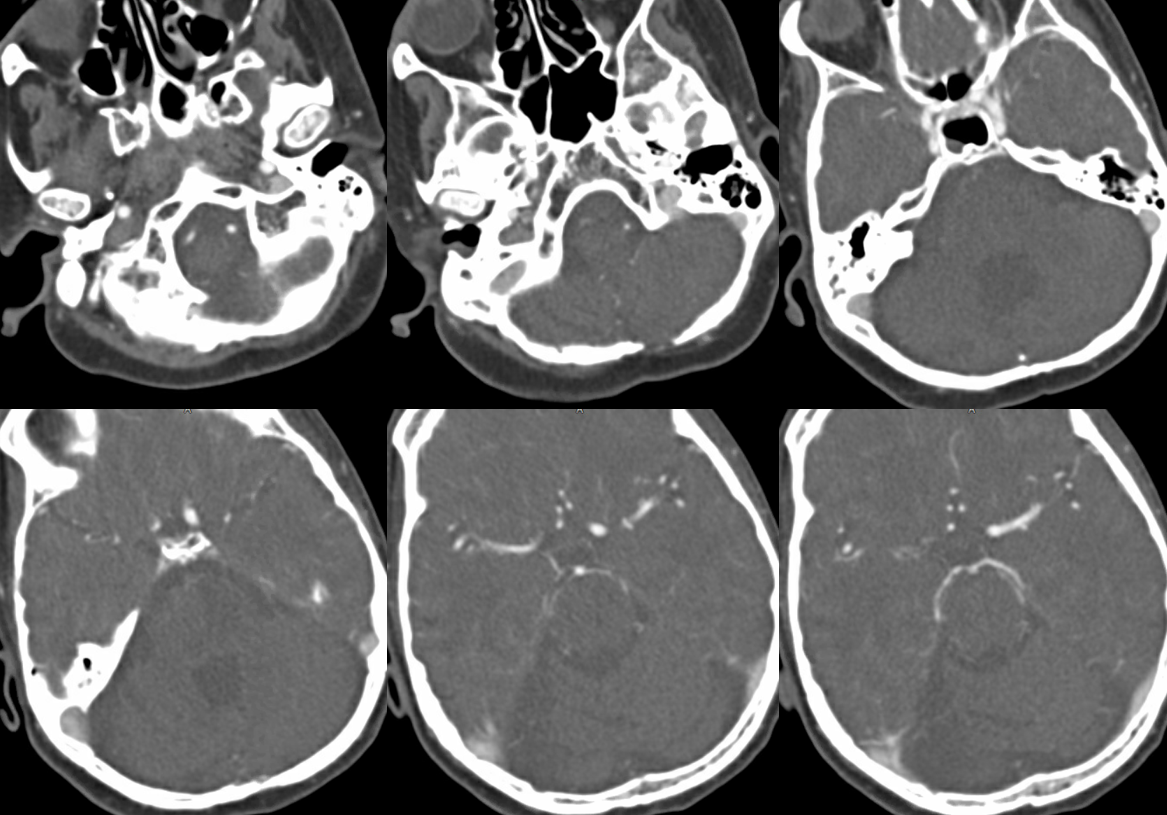Long segments of basilar occlusion, without PCOMs, are usually deadly. With PCOMs, the result is usually pontine perforator infracts. Unilateral single perforator infarcts have good to excellent prognosis. Bilateral infarcts of multiple perforators, while sparing top of basilar, produce the dreaded locked-in syndrome. See below. Initial presentation was right-sided weakness, due to larger burden of occlusions on the right side, progressing quickly to full syndrome.

Bilateral vertebral occlusions suggest atheromatous etiology


Probably a more common generator of locked in syndrome is pontine hemorrhage, and with advances in thrombectomy many basilar occlusions can be reopened, with varied clinical outcomes
